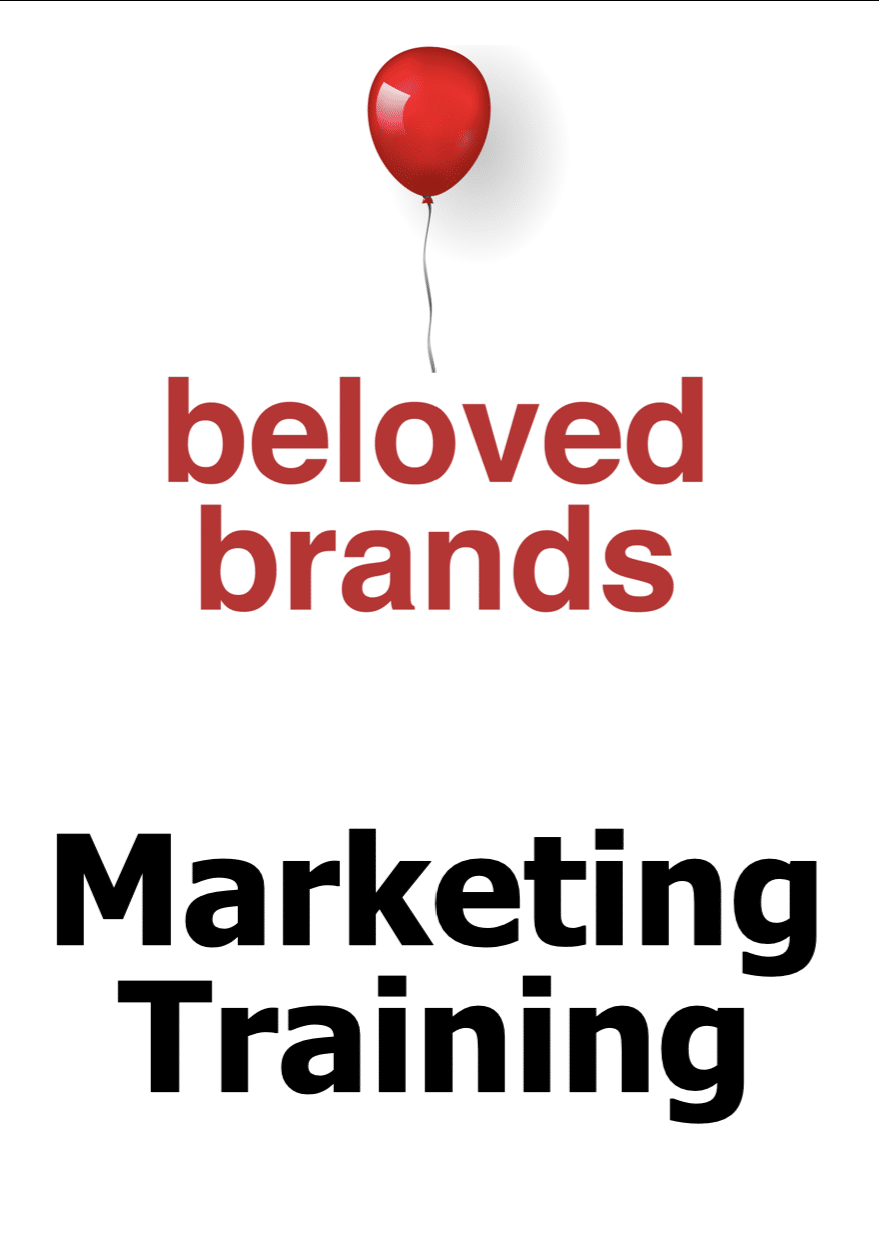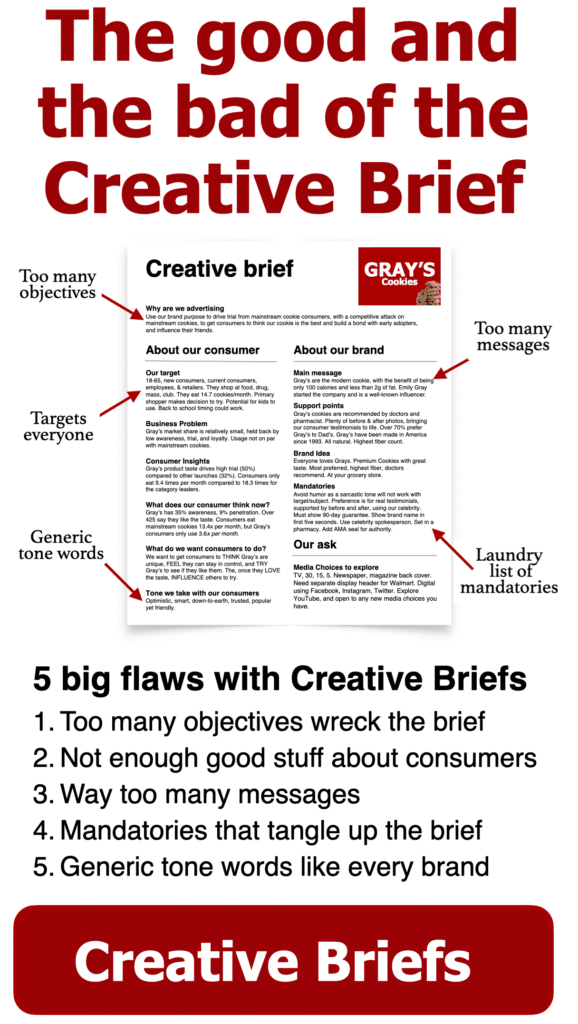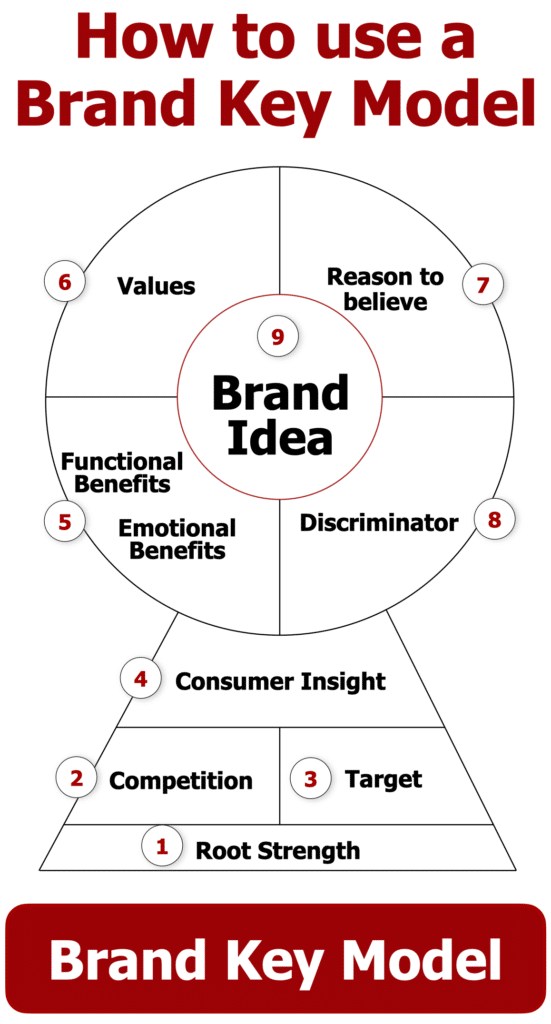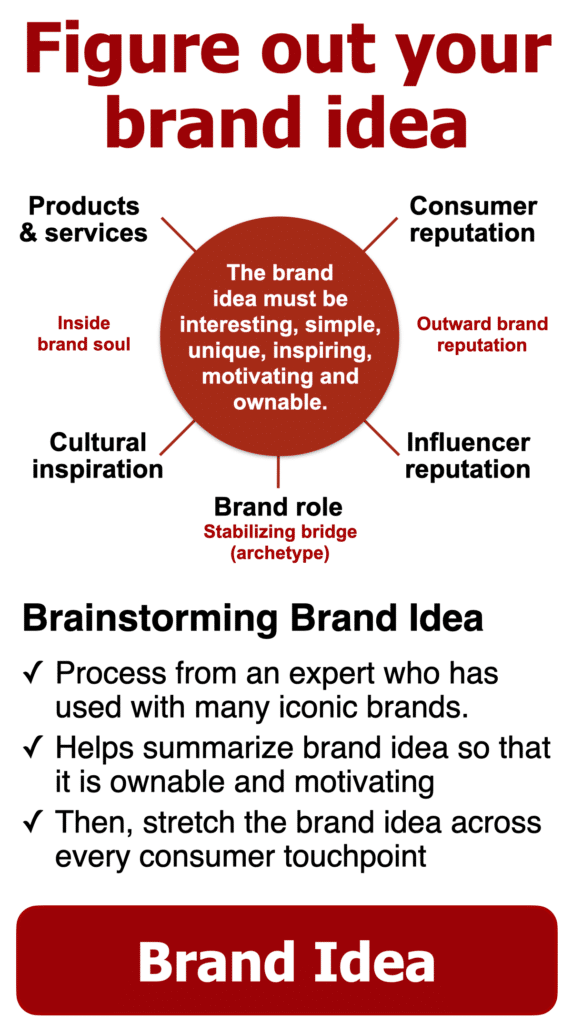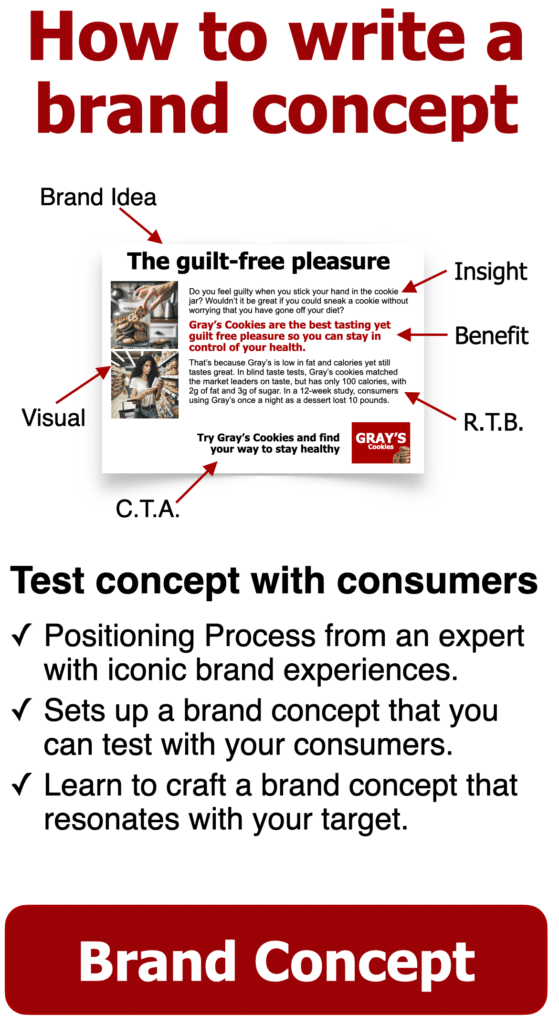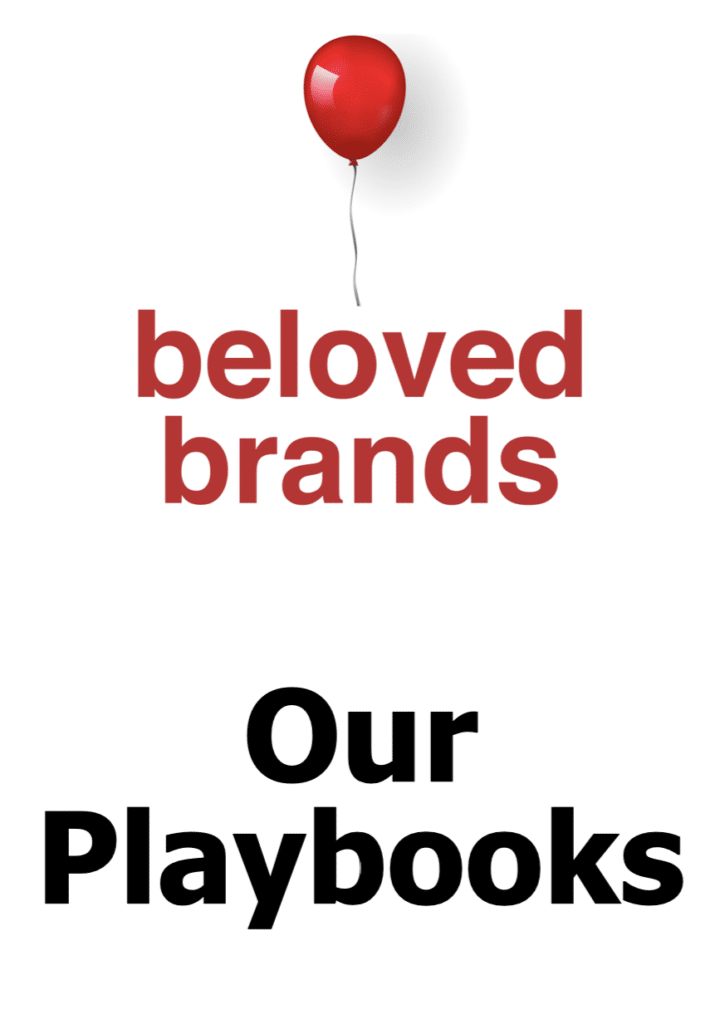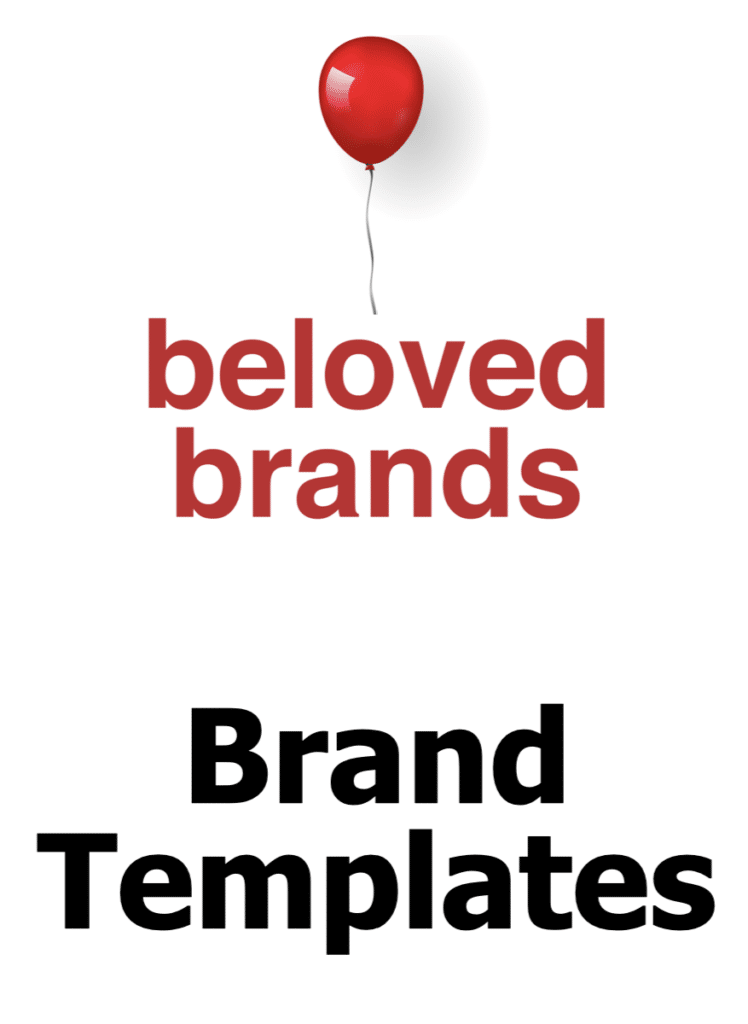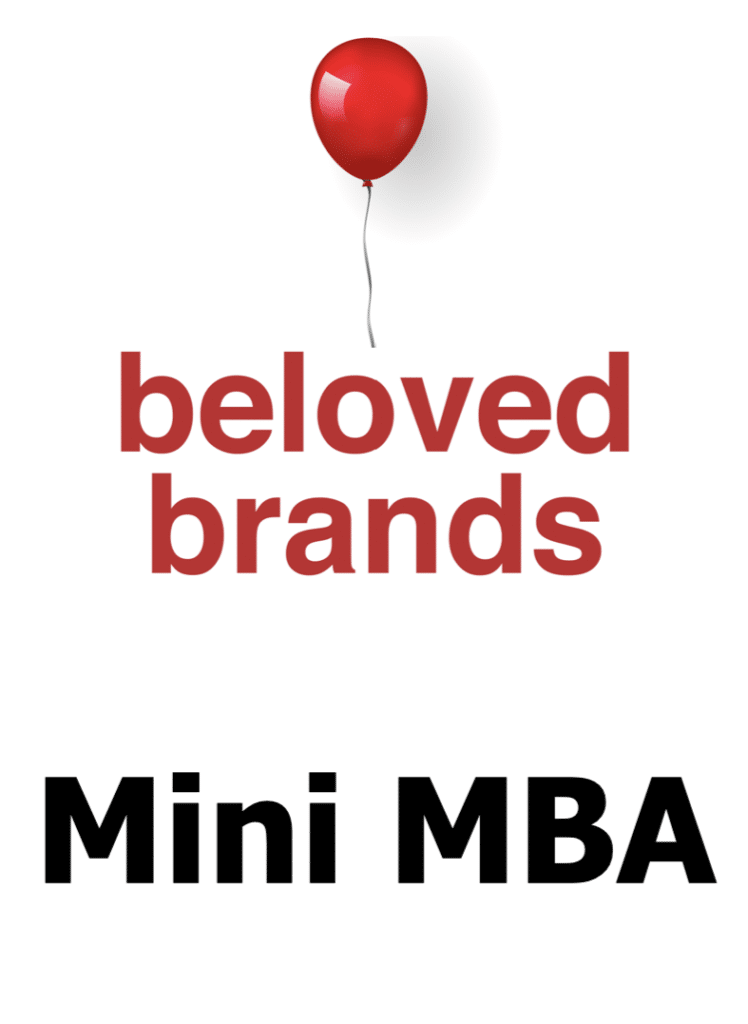In an era often described by its rampant consumerism, there’s an intriguing juxtaposition at play. Discover the importance of sustainable brands for our environment. Read how eco-friendly brands make conscious decisions—driven by profit and an urge to be part of a global solution. We’ll take a look at four case studies, including Patagonia, Ikea, Adidas, and Interface, a B2B sustainable brand in the flooring industry.

The shift towards sustainable brands
Consumer Awareness: The Driving Force Behind Sustainability
When discussing sustainable brands, we’re not just discussing corporate decisions made in boardrooms. It’s a reflection of a collective global consciousness among consumers. There’s a poignant truth about today’s consumers: they’re not passive. They’re curious, discerning, and acutely aware of the planet’s fragility. In this context, their demand for sustainability is more a clarion call than a mere preference.
The financial value of eco-friendly brands going green
If this were a simple story, it might end with the assertion that brands are becoming sustainable because it’s morally right. The truths of societal change are intricately layered. There’s undeniable financial wisdom in going green. Sustainable products often command higher prices, not to mention the brand loyalty they foster.
Legislative Changes Pushing Brands Towards Eco-friendliness
But, the market isn’t the only agent of change. Governments worldwide, understanding the perils of climate change and unchecked waste, are putting the onus on corporations. Legislation now increasingly favors or even mandates green practices.
Sustainable brands leading the charge
Patagonia: More Than Just an Eco-friendly Clothing Brand
Consider Patagonia, the classic eco-friendly brand whose environmental advocacy is legendary. They’re not just selling clothing but promoting a lifestyle, an ethos. Their pledge to donate the saved tax from the recent corporate tax cuts to environmental causes is a testament to their commitment.
Finding an eco-friendly brand transcending its primary product line to resonate on a larger, more impactful scale is a rarity in the cutthroat business world. Patagonia, a trailblazer in eco-friendly fashion, is one such example. For them, sustainability isn’t just a buzzword to capture a niche audience; it’s an intrinsic part of their brand DNA.
Founded in 1973 by Yvon Chouinard, Patagonia began as a small company selling tools for climbers. Today, it stands tall as a beacon for sustainable business practices in the apparel industry. But what’s most intriguing about Patagonia is not its high-quality outdoor clothing but the philosophy that envelops every stitch and seam.
At its heart, Patagonia isn’t merely a clothing company; it’s a movement and the role model for sustainable brands.
It sells apparel, an ideology, and an urgent call to arms. Every jacket, shirt, or pair of pants comes with an embedded narrative of environmental responsibility and a plea to treat our planet with kindness. When you wear Patagonia, you’re not just donning a piece of clothing; you’re wearing a story, a commitment, and a promise.
It is good business to be an eco-friendly brand.
Patagonia’s commitment to environmental advocacy is good business, tapping into a growing market of eco-conscious consumers. And while there’s undoubtedly a business case for sustainable brands, Patagonia’s track record suggests something far deeper. It’s not just about profits; it’s about purpose.
Take, for instance, the company’s decision to donate the entirety of the $10 million it saved from federal tax cuts in 2018. Instead of channeling these funds back into the business or distributing them among shareholders, Patagonia donated the sum to grassroots environmental organizations. This act was a bold statement, emblematic of a brand willing to put its money where its mouth is.
To illustrate, click on the Patagonia pledge to see a role model for sustainable brands to follow.
Moreover, Patagonia’s commitment to transparency is commendable.
Their “Footprint Chronicles” allows customers to trace the journey of a product right from its raw material stage to its arrival in stores. By doing this, they hold themselves accountable and educate consumers, fostering a deeper connection between the wearer and the worn.
Their activism doesn’t stop at environmental causes. Patagonia has been vocal about various societal issues, from voting rights to women’s empowerment. For Patagonia, advocacy is not a side gig; it’s central to their brand identity.
In an era where many companies are scrambling to integrate sustainability into their business models, Patagonia stands out as the eco-friendly brand that’s been green since its inception. Their holistic approach, which combines high-quality products with genuine environmental and social activism, sets them apart in a crowded marketplace.
In essence, Patagonia’s legacy is a testament to the power of melding business with a broader purpose.
It’s a shining example that profitability and responsibility aren’t mutually exclusive but can, in fact, coexist in beautiful synergy. As consumers increasingly align their purchasing decisions with their values, brands like Patagonia offer a blueprint for the sustainable brand — a future where business uplifts, nourishes, and regenerates.
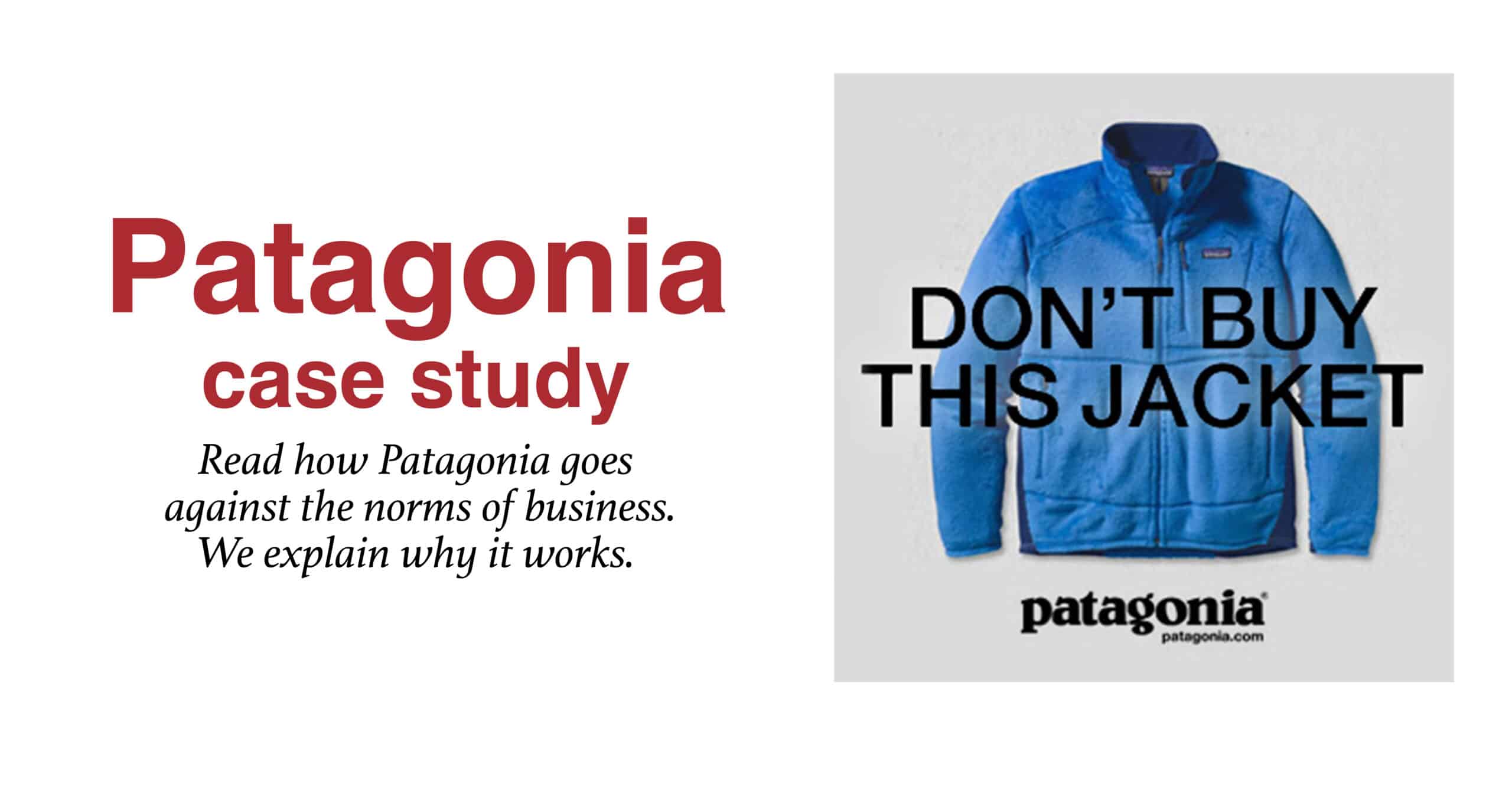
IKEA: A blueprint for the modern sustainable brand
When one thinks of IKEA, often the first things that come to mind are sleek Nordic designs, maze-like stores filled with room setups, and perhaps those iconic meatballs. But behind the facade of affordable, flat-pack furniture lies a comprehensive approach to sustainability, deeply woven into IKEA’s business model.
IKEA’s journey towards sustainability is not a recent endeavor. The company has long recognized the finite nature of resources and has progressively aimed to lessen its impact on the planet. A cornerstone of this effort is its commitment to sustainable wood sourcing.
Ikea’s Sustainable Sourcing
Wood is a primary material for IKEA, foundational to a majority of its products. Understanding the environmental consequences of deforestation, IKEA pledged that by 2020, all its wood would come either from more sustainable sources (FSC-certified or recycled wood). True to its commitment, the company has achieved this target, which is no small feat considering IKEA uses around 1% of the world’s commercial wood supply.
But IKEA’s sustainability efforts don’t stop at raw materials. The very essence of its product design philosophy revolves around efficiency and waste minimization. The flat-pack design, a signature of IKEA products, isn’t just a novelty or a shipping convenience. It’s an innovative approach to reducing transportation emissions. The carbon footprint per product diminishes by allowing more products to fit into a single shipment. Furthermore, the efficient design reduces costs, a saving that IKEA passes onto consumers, proving that sustainable practices can coexist with affordability.
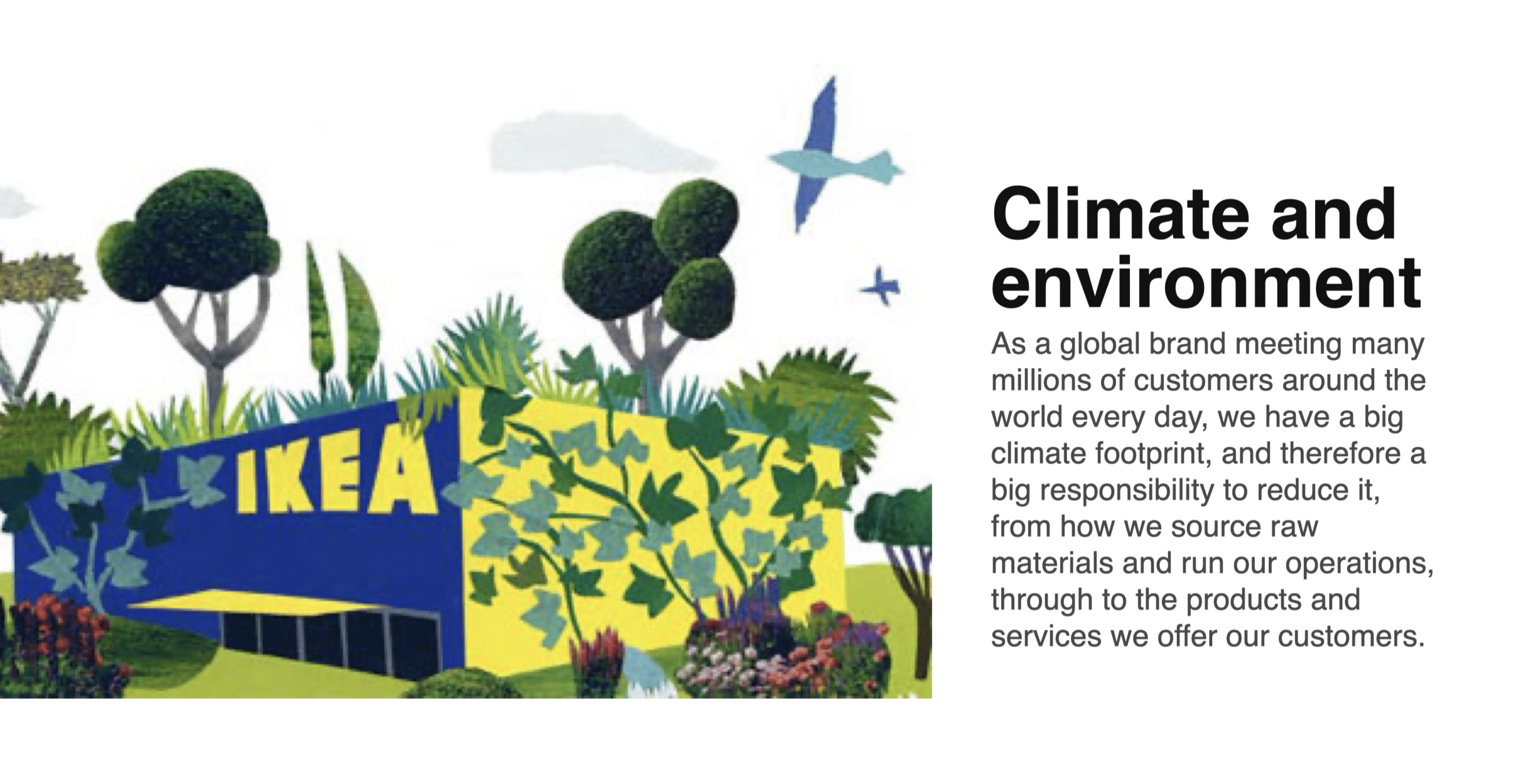
Eco-friendly brands must deliver
Delving into specific product lines, one discovers innovations like the KUNGSBACKA kitchen fronts. These units are made entirely from recycled wood and covered in a plastic foil derived from recycled PET bottles. The result? A durable, water-resistant finish that gives discarded materials a second life.
IKEA’s dedication to sustainability also shines through its ventures outside its core furniture business. Recognizing the burgeoning energy crisis and the environmental impact of non-renewable energy sources, IKEA took a pioneering step by committing to produce as much renewable energy as the total energy it consumes in its operations by 2020. This aspiration led to significant investments in wind farms and solar energy installations in multiple countries. Today, IKEA is not only a furniture retailer but also one of the world’s top ten consumers of renewable energy.
Consumer empowerment is another feather in IKEA’s green cap.
The brand actively encourages consumers to adopt a sustainable lifestyle. From solar panels that homeowners can install on their rooftops to indoor hydroponic gardening units, allowing urban dwellers to grow fresh produce, IKEA is slowly redefining modern living through the lens of sustainability.
Looking ahead, the company continues to chart its path with an ambitious sustainability strategy titled “People & Planet Positive.” The initiative outlines bold targets for the coming years, covering climate positivity, circular consumption, and even sustainable food offerings.
In essence, IKEA’s journey to becoming an eco-friendly brand manifests its core values: to create a better everyday life for the many.
It beautifully exemplifies that with vision, commitment, and innovation, large-scale businesses can operate sustainably without compromising on their foundational principles. IKEA’s story is not just about assembling furniture; it’s about piecing together a brighter, greener future for our planet.
Adidas: Turning the tide with recycled ocean plastic shoes and clothing
Amidst the vast expanse of blue, the oceans are gasping for breath, choked with plastics that should’ve never found their way there. The marine plastic crisis isn’t just an ecological disaster; it’s a visual testament to our consumption patterns gone awry. Yet, in this bleak scenario, certain brands are rising, turning adversities into innovations. At the forefront of this wave is Adidas, turning ocean menace into a message of hope and change.
It all started with a vision to make a tangible difference. In 2015, Adidas partnered with Parley for the Oceans, an environmental organization that raises awareness about the beauty and fragility of our oceans. The collaboration birthed a prototype: a shoe made entirely of yarns and filaments reclaimed and recycled from ocean waste and illegal deep-sea gillnets. The message was clear: sustainability isn’t a mere afterthought; it can be at the very core of global brands.
But Adidas didn’t stop at a prototype.
Realizing the immense potential and the pressing need, the brand accelerated its efforts. In 2016, Adidas released around 7,000 pairs of its UltraBoost Uncaged Parley, the first mass-produced footwear created using recycled marine plastic waste. The shoes were more than just a fashion statement; they were a declaration of intent, a symbol of possibilities.
Beyond just the raw materials, the design itself was an ode to the oceans. The aesthetics, inspired by ocean waves, served as a constant reminder of the shoe’s origins and the brand’s commitment to the cause. Yet, the shoes didn’t compromise on performance. True to Adidas’s legacy, they provided the comfort, support, and durability athletes expect from high-performance sportswear.
The initiative proved to be more than a flash in the pan.
Capitalizing on the positive response, Adidas ramped up production. The company set ambitious goals: to produce 11 million pairs of shoes using ocean plastic.
But the ocean-plastic initiative was more than just about shoes. It spread across Adidas’s product range, including jerseys and sportswear. Iconic football clubs like Real Madrid and Bayern Munich have donned jerseys made from recycled ocean plastic, propelling the message to millions of fans globally.
Beyond product lines, this initiative has reshaped Adidas’s brand narrative. Their commitment has opened up conversations about sustainable sportswear industry practices and set benchmarks for competitors. By turning ocean plastics into coveted products, Adidas is driving demand for recycled materials, potentially spurring more extensive cleanup efforts and reducing reliance on virgin plastics.
The implications of Adidas’s endeavors are twofold.
From a business perspective, they’ve showcased that sustainable initiatives can resonate with consumers, drive brand loyalty, and even open up new market segments. From a broader perspective, they’ve set a precedent for global brands. The message is evident: In the modern age, brands aren’t just defined by their products but by the ethos they embody and the impact they have on the world.
In essence, Adidas’s journey with ocean plastics isn’t just about transforming waste into sportswear. It’s a holistic approach, interweaving environmental responsibility with brand identity and product innovation. In a world grappling with sustainability challenges, Adidas’s strides offer a glimmer of hope, proving that with innovation and commitment, we can chart a course towards a more sustainable future.
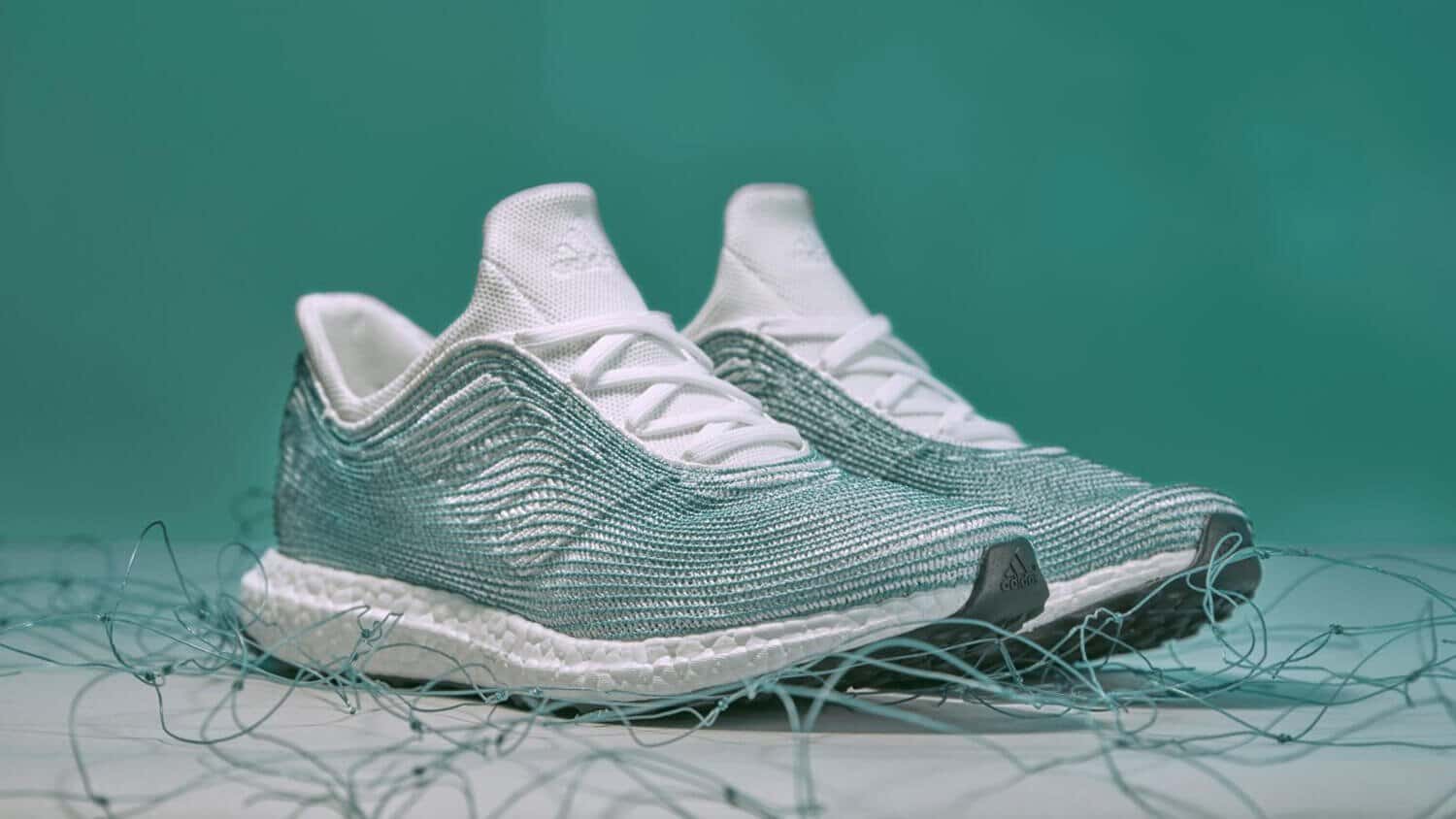
M A R K E T I N G B O O K
beloved brands
The playbook for how to create a brand your consumers will love
Beloved Brands is your secret weapon to guide you through every challenge that you face in managing your brand
Get ready to challenge your mind as we take you on a deep dive to find the most thought-provoking strategic thinking questions that will help you see your brand in a whole new light.
Our unique process for defining your brand positioning will push you to find fresh ideas and new possibilities for how to differentiate your brand based on both functional and emotional benefits.
But we won’t just leave you with ideas – we show how to transform your thinking into action.
Learn how to write a brand plan that everyone can follow, ensuring that all stakeholders are aligned and contributing to your brand’s success.
We’ll walk you through the marketing execution process, from writing an inspiring brief to making smart and breakthrough decisions on both creative advertising and innovation.
And when it comes to analyzing your brand’s performance, we’ve got you covered. Learn how to conduct a dive deep audit on your brand to uncover key issues that you never knew existed.
And, don't just take our word for it: our Amazon reviews speak for themselves.
With over 85% of our customers giving us a glowing five-star rating and an overall rating of 4.8 out of 5.0, we know we’re doing something right. And with numerous weeks as the #1 bestseller in brand management, you can trust that we have the experience and expertise to help you achieve success.
"The cheat code for brand managers!"
“It is without a doubt the most practical book for those who want to follow brand management that I have ever read in my life! Beloved Brands is written by a real, experienced marketeer for marketers. This book contains methodologies, tools, templates and thought processes that Graham actually used and uses in his career.”
Read our sample chapter on strategic thinking
Interface: A B2B sustainable brand in the flooring industry
Interface is a global B2B commercial flooring company specializing in carpet tiles and resilient flooring. Founded in 1973 by Ray Anderson, the company underwent a profound transformation in the mid-’90s when Anderson read Paul Hawken’s “The Ecology of Commerce” and was inspired to shift his company towards sustainability.
The journey to being the B2B eco-friendly brand:
Ray Anderson’s epiphany led him to launch “Mission Zero” in 1994, Interface’s pledge to eliminate any negative impact the company might have on the environment by 2020. It was a bold and, at the time, unprecedented commitment in the B2B flooring industry.
Closed-loop recycling:
Interface developed technologies to recycle carpet tiles, transforming old products into raw materials for new tiles.
They also initiated a “ReEntry” program, ensuring that old carpet, which typically went to landfills, was instead recycled or repurposed.
Carbon neutral floors:
In its efforts to combat climate change, Interface announced in 2018 that all its products worldwide would be carbon neutral across their lifecycle.
They achieved this by reducing their own carbon emissions and offsetting the remaining emissions by purchasing carbon offsets.
Bio-inspired design:
The company embraced biomimicry, which involves studying and drawing inspiration from nature to solve human problems. Their product line, such as the “Entropy” carpet tiles, mirrors the randomness of natural patterns, reducing waste in installation and improving aesthetics.
Supply chain:
Interface scrutinized its supply chain to reduce greenhouse gas emissions, aiming to use 100% renewable energy. The company also encouraged its suppliers to adopt greener practices, emphasizing long-term partnerships with those who shared their sustainability ethos.
Impact:
Interface met and exceeded many of its Mission Zero goals ahead of its 2020 deadline. The company:
- Reduced greenhouse gas emissions by 96%.
- Cut the carbon footprint of carpet tiles by 74%.
- Sourced 89% of its energy from renewable sources.
- Reduced water usage in manufacturing facilities by 89%.
In recognition of its efforts, Interface has been lauded globally, receiving numerous awards for its commitment to sustainability.
Legacy and looking forward:
Ray Anderson passed away in 2011, but his legacy is deeply ingrained in Interface’s DNA. The company has set forth a new mission called “Climate Take Back,” focusing on reversing global warming and not just reducing its carbon footprint. This involves pioneering methods to remove and use carbon from the atmosphere in products.
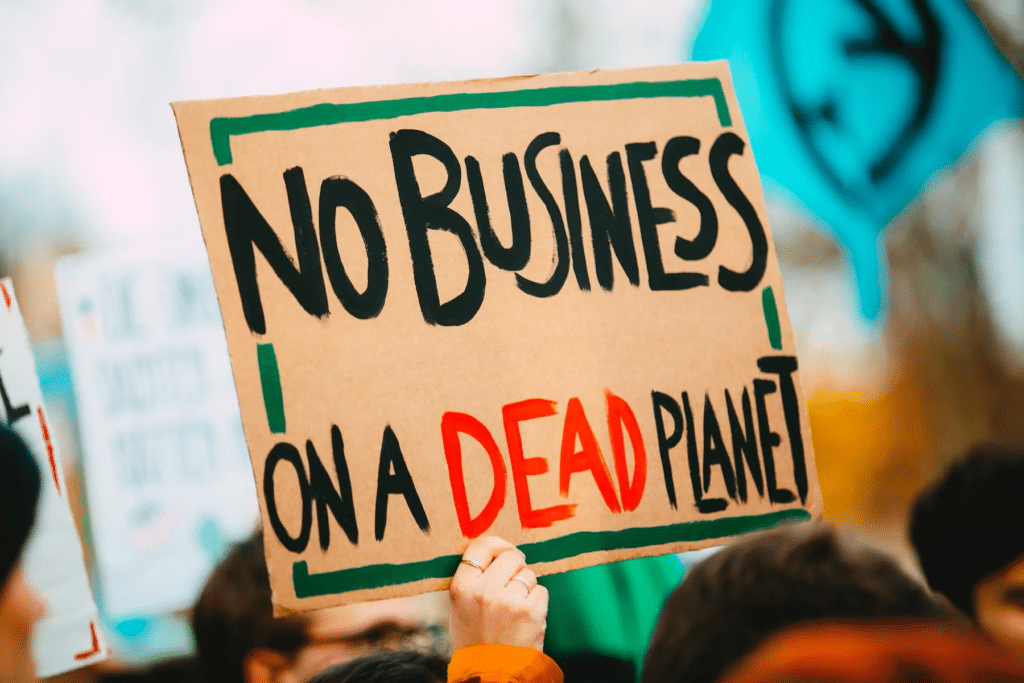
Sustainable brand strategy
Challenges faced by brands in transitioning to being a sustainable brand
The hurdles of overhauling the supply chain
Changing a brand’s ethos isn’t akin to flicking a switch. It demands a comprehensive overhaul of supply chains, which is easier said than done. Many brands have spent years, if not decades, optimizing their supply chains for cost, not eco-friendliness.
Managing consumer perceptions and expectations
While consumers demand sustainability, they also come with a set of perceptions. Often, they equate ‘green’ with compromised quality or higher prices, an assumption brands must tactfully navigate.
The balance between profitability and sustainability
At its core, a brand’s primary responsibility is to its shareholders. So, while sustainability is noble, it must be balanced against profitability—a fine tightrope walk for many brands.
Strategies for sustainable brands
Collaborating with eco-conscious partners and suppliers
One shortcut to sustainability is collaboration. By partnering with green innovators and suppliers, eco-friendly brands can leverage existing expertise without reinventing the wheel.
Educating consumers and creating eco-friendly communities
Education is empowerment. Eco-friendly brands are investing in campaigns to market their products and enlighten their consumers about sustainability and its impact.
Implementing circular economy principles in business models
A circular economy, where products are designed for reuse and recycling, is becoming a beacon for brands. It’s about viewing waste not as trash, but as a resource.
Measuring the impact of eco-friendly brands: Tracking and reporting sustainability metrics
Key performance indicators for eco-friendly brands
The old adage, “What gets measured gets managed,” rings true. Brands are implementing KPIs specific to their green initiatives, ensuring that they’re not just for show.
The importance of third-party certifications and audits
Consumers are wary of greenwashing, and rightly so. Third-party certifications offer brands an opportunity to validate their claims and build trust.
Communicating sustainability wins to stakeholders and consumers
An eco-friendly brand’s green journey is a story worth telling. By effectively communicating their sustainability milestones, brands enhance their image and inspire others to join the movement.
The future of sustainable brands
In conclusion, the journey towards sustainable brands is fraught with challenges yet illuminated with promise. And as history often shows, a cascade of change is inevitable when a tipping point is reached. Eco-friendly brands aren’t just shaping their futures and ours in their quest for sustainability.





